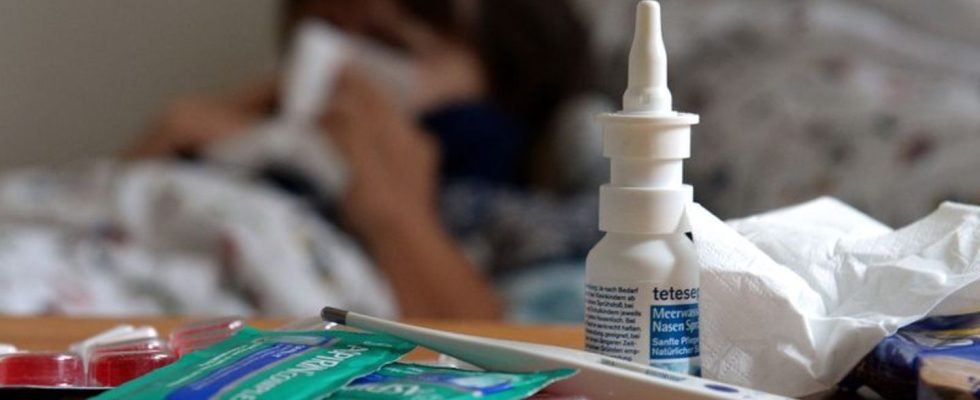Robert Koch Institute
Respiratory viruses: More than one in ten people are sick
Many people probably spend the days before Christmas sick in bed. (Illustration) Photo
© Susann Prautsch/dpa
Anyone who has to stay in bed due to illness shortly before Christmas can at least console themselves with the thought: a lot of people are going through that situation right now. The numbers are increasing, particularly among children and young adults.
More than one in ten is still or has just been affected: The extrapolated number of acute respiratory diseases in Germany continued to rise last week.
The Robert Koch Institute (RKI) states in its report from Wednesday evening that there are around 8.9 million such illnesses, regardless of a doctor’s visit (previous edition: 7.9 million). This is a similarly high level as this time last year.
In a weekly comparison, the values have increased, particularly among school-age children and young adults, writes the RKI. In addition to Corona, there are an unusually high number of rhinovirus infections (colds) as well as an increasing number of RSV and flu cases at this time. RSV stands for the respiratory syncytial virus – which is currently sending children under two into hospital in particular.
According to the RKI definition, the flu wave has still not started. However, with regard to random virological examinations, experts speak of a noticeably steep increase in the rate of positive samples for so-called influenza A(H1N1)pdm09 viruses.
The RKI writes about this subtype on its website that it first appeared during the 2009 flu pandemic: as so-called swine flu. Since then, it has also circulated seasonally in Germany, most recently significantly in the 2018/19 season.
During influenza waves in which this pathogen dominated, it was observed that very serious illnesses and deaths also occurred in younger adults and children, especially if underlying illnesses were present. “Overall, such severe cases are rare in young people.”

